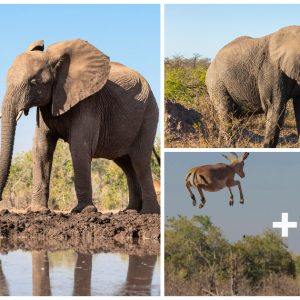A new study of circular patches across Venus where lava oozes to the surface suggests the planet’s youthful appearance is likely due to volcanic activity. This volcanism is also making the rocky outer layers of Venus “squishy” in these spots.

Planetary scientists gauge the “youthfulness” of a planet’s surface by counting the number of visible impact craters on it. Here on Earth impact craters, caused by asteroids and other small bodies, are primarily wiped clean from the planet’s surface as a result of churning tectonic activity, particularly when an oceanic tectonic plate encounters a continental plate and slips underneath it in a process called “subduction.” This process “recycles” surface material by creating new surface rock and causes volcanism that also brings fresh material to the surface.
Because Venus lacks tectonic activity, it should be covered by old impact craters, but when scientists count these features, they find that the planet’s surface looks quite young.
The team behind this new research found that quasi-circular geological features on Venus’s surface, called “coronae” and first observed by the Magellan spacecraft in the 1990s, could explain this mystery. They also took new measurements which found that coronae are located in regions where Venus’ rocky outer layer or “lithosphere” is at its thinnest and most volcanically active, indicating that volcanic rock makes its way to the surface thus “refreshing” the planet’s appearance. The findings may also reveal how Venus, the second planet from the sun, loses its interior heat.
Related: Planet Venus: 20 interesting facts about the scorching world
Earth has an ‘evil twin’ – Venus explained by NASA scientist
0 seconds of 1 minute, 48 secondsVolume 0%
“For so long we’ve been locked into this idea that Venus’ lithosphere is stagnant and thick, but our view is now evolving,” NASA’s Jet Propulsion Laboratory senior researcher, Suzanne Smrekar, said in a statement. (opens in new tab) “While Venus doesn’t have Earth-style tectonics, these regions of thin lithosphere appear to be allowing significant amounts of heat to escape, similar to areas where new tectonic plates form on Earth’s seafloor.”

Earth loses heat from its hot core, which heats the planet’s mantle, which, in turn, drives tectonic activity as the heat passes to the surface and is then lost to space. Venus, on the contrary, can’t cool in the same way. Yet, as Earth and Venus are rocky planets of similar sizes with similar chemistry, they should be losing their internal heat to space at about the same rate.
That has left the mechanism by which Venus cools something of a mystery, until now. The new study has indicated that just as a thin bed sheet releases more body heat than a thick comforter, more heat can escape from Venus’ interior to its surface in areas where the planet has a thin lithosphere.
An enhanced heat flow points to increased volcanic activity below the surface where this heat escape happens through buoyant plumes of molten rock rising to the outer layer. This points to the coronae as regions at which geological activity and volcanism are forging the appearance of Venus’ surface.
To reach their conclusion, Smrekar and the team looked at 65 previously unstudied coronae with diameters as great as a few hundred miles. By measuring the depth of the trenches and ridges that surround these coronae, the scientists could deduce the thickness of the lithosphere in these areas. This showed them that where the ridges are bunched together closely, the lithosphere of Venus is more flexible.
By modeling how an elastic lithosphere like this would bend, the team determined the thickness of this layer to be around 7 miles (11 kilometers) in areas surrounding coronae. This is much thinner than previously estimated, with these areas also having a heat flow far greater than the average across Earth, which indicates the coronae are geologically active.
Volcanism on Venus: A window into Earth’s violent history
/https://tf-cmsv2-smithsonianmag-media.s3.amazonaws.com/filer/bd/fe/bdfe73b6-3915-4204-ad1e-6c7928fc379b/119541main_image_feature_358_ys_full.jpg)
The regional surfacing and the condition of Venus’ lithosphere today may resemble Earth’s lithosphere in its distant history before tectonic activity started.
“What’s interesting is that Venus provides a window into the past to help us better understand how Earth may have looked over 2.5 billion years ago,” Smrekar said. “It’s in a state that is predicted to occur before a planet forms tectonic plates.”
Smrekar is the principal investigator of one of NASA’s forthcoming Venus missions, the Venus Emissivity, Radio Science, InSAR, Topography, And Spectroscopy (VERITAS) mission. Currently set to launch later this decade, VERITAS will journey to Venus to continue the mission of Magellan.
The mission will improve on low-resolution data collected by its spiritual predecessor by using a state-of-the-art synthetic aperture radar to build 3D global maps. VERITAS will also employ a near-infrared spectrometer to determine the planet’s surface composition.
The mission will delve deeper than the surface of Venus too, using measurements of the planet’s gravitational field to investigate the structure of its interior.
This powerful combination of instruments means that VERITAS should be able to paint a more complete picture of the geology of Venus and the processes that have shaped the planet.

“VERITAS will be an orbiting geologist, able to pinpoint where these active areas are, and better resolve local variations in lithospheric thickness. We’ll even be able to catch the lithosphere in the act of deforming,” Smrekar concluded. “We’ll determine if volcanism really is making the lithosphere ‘squishy’ enough to lose as much heat as Earth, or if Venus has more mysteries in store.”





